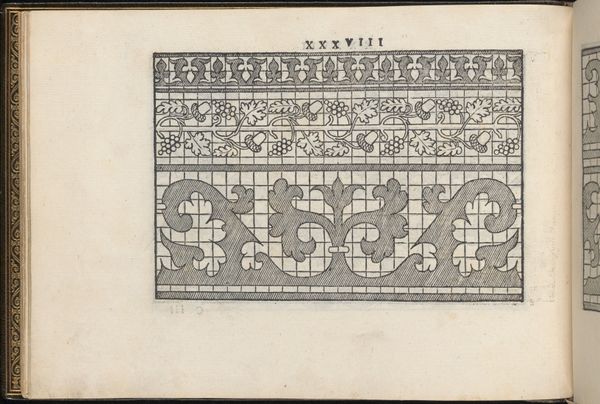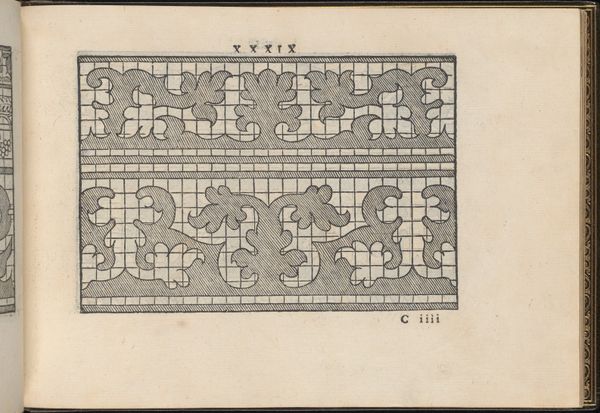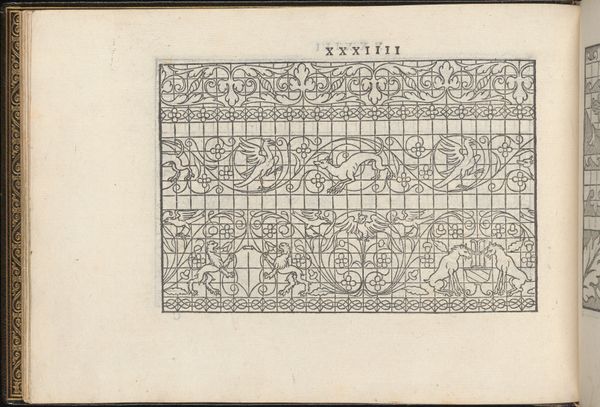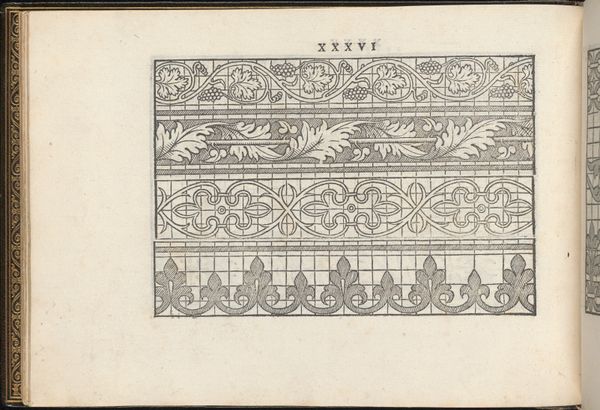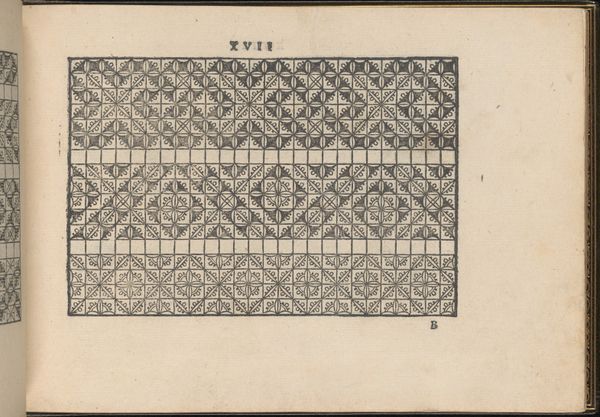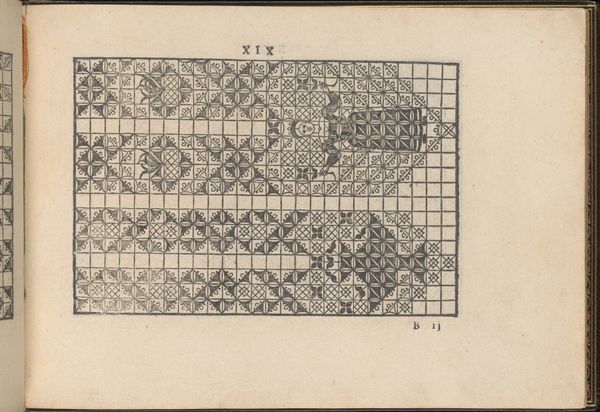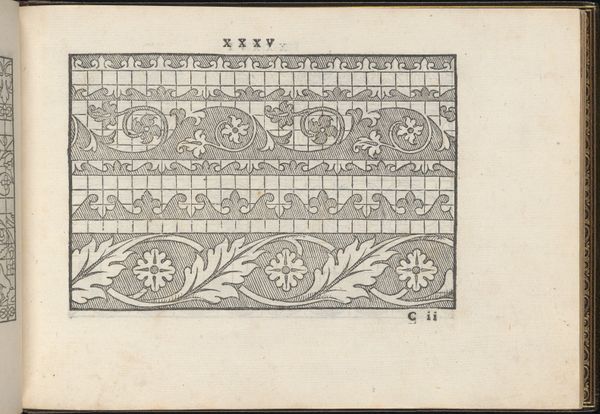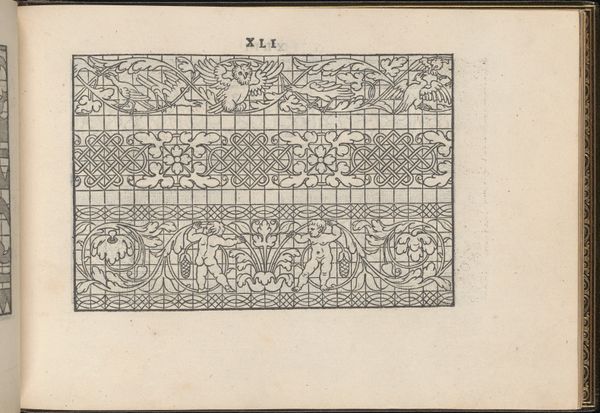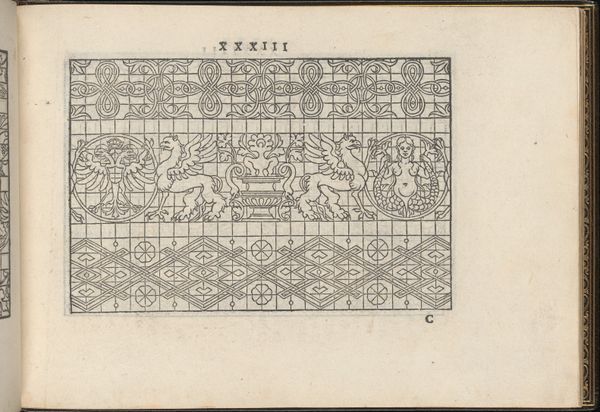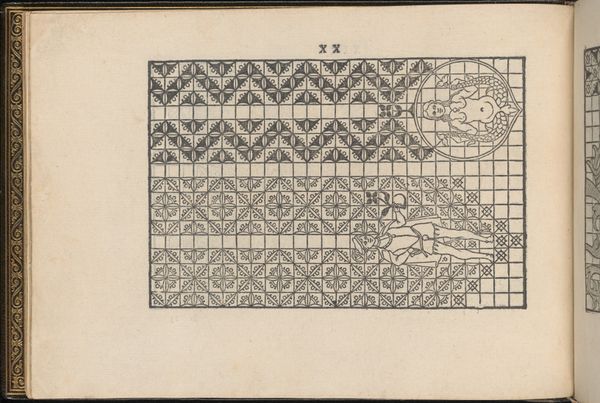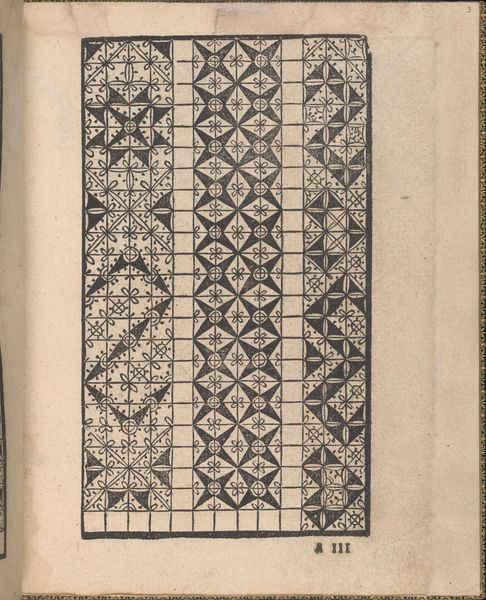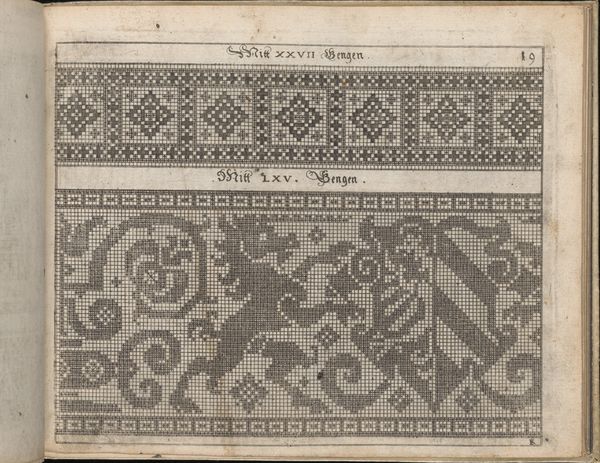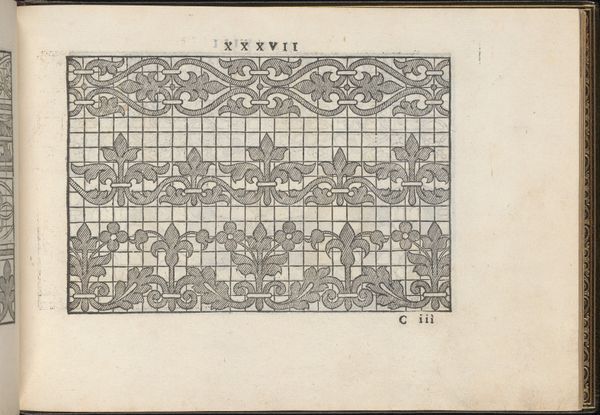
La Vera Perfettione del Disegno di varie sorti di recami, page 20 (verso) 1567
0:00
0:00
drawing, graphic-art, ornament, print, paper, engraving
#
drawing
#
graphic-art
#
ornament
#
toned paper
# print
#
book
#
sketch book
#
paper
#
personal sketchbook
#
geometric
#
line
#
decorative-art
#
italian-renaissance
#
engraving
Dimensions: Overall: 6 5/16 x 8 7/16 in. (16 x 21.5 cm)
Copyright: Public Domain
Curator: This page is from "La Vera Perfettione del Disegno di varie sorti di recami," created by Giovanni Ostaus in 1567. It is currently located in the Metropolitan Museum of Art. This engraving, a print on toned paper, showcases geometric and line-based designs intended as templates for embroidery and other decorative arts. Editor: Initially, the fine, almost lace-like intricacy evokes a feeling of delicate refinement, and that grid creates a sense of structured precision. There's a certain austerity in its geometric patterning and monochromatic palette. Curator: Yes, the organization is particularly interesting. Note the parallel arrangement and repetition of decorative motifs. There is, on close inspection, an interesting contrast between the fluidity of the botanical elements and the firm, perpendicular grid onto which they're overlaid. It is this very rigidity that defines the form. Editor: I wonder, though, about accessibility. While beautiful and intricate, these designs also reflect a society with strict gender roles. Were women of all social strata able to produce and consume these designs? Or was embroidery a pastime mostly accessible to wealthy women as a means of showing status? Curator: Undoubtedly, you have pinpointed a pivotal aspect often overlooked. This sort of book provided patterns but simultaneously acted as a symbolic display. Embroidery, traditionally connected to feminine accomplishment and virtue, attained yet another stratum of cultural complexity. Editor: These patterns are definitely culturally revealing. When we view such ornamental sketches through an intersectional perspective, they expose stories of capability, labor, and sometimes unspoken restrictions that sculpted the lives of Renaissance women. What was imposed on their lives as a result of societal values is often forgotten. Curator: By engaging with these levels of historical context, our comprehension of not just the form of the artwork, but its resonance expands immeasurably, providing it renewed depth and significance. Editor: Indeed, art becomes so much more enriching when seen as both a product and a shaper of culture, rather than simply a beautiful decorative thing.
Comments
No comments
Be the first to comment and join the conversation on the ultimate creative platform.
